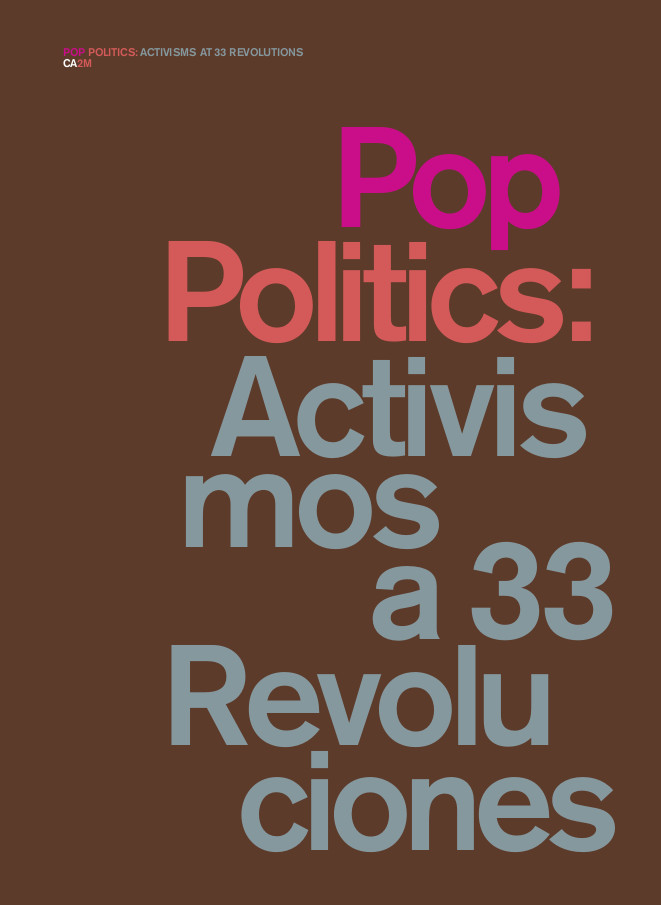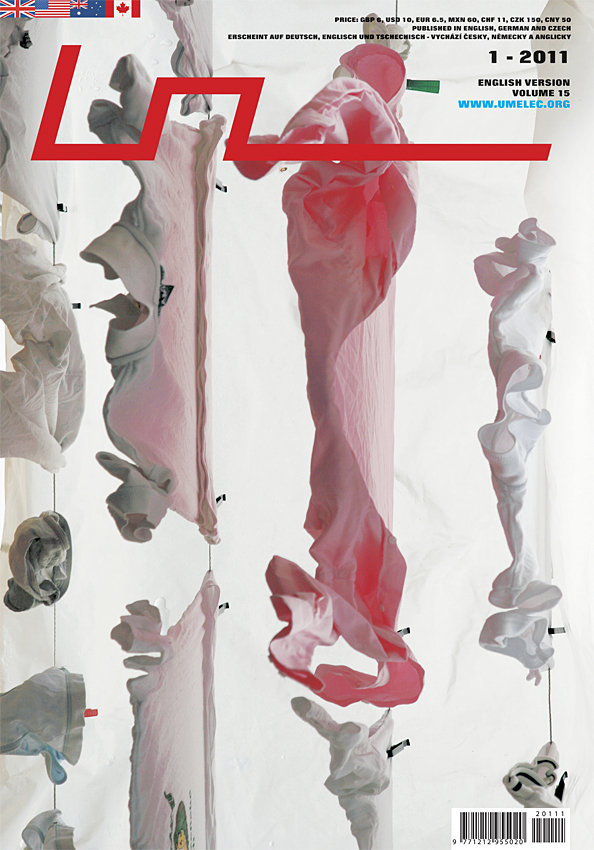Pop Politics: Activisms at 33 Revolutions, catalogue (2012) [English/Spanish]
Filed under catalogue | Tags: · activism, art, music, politics, popular culture, sound

The catalogue for an exhibition held at Madrid’s CA2M Centro de Arte Dos de Mayo from November 2012 to April 2013, curated by Iván López Munuera.
“The point of departure for Pop Politics is that the political agenda of the visual arts has in many occasions inherited and expanded the experiences of music. The exhibition shows how many artists and art theorists have from their own personal practice visited music, whether as makers, consumers, or critical agents. The exhibition is situated on the margins of the formal consideration of politics, that which refers to forms of government and processes of representation, the taking of decisions and their administration.” (from the Introduction)
With texts by Amparo Lasén, Ferrán Barenblit, Greil Marcus, Ivan López Munuera, José Manuel Costa, Kim Gordon, Lucy O’Brien, Peio Aguirre, and Simon Reynolds.
Publisher CA2M Centro de Arte Dos de Mayo, Madrid, 2012
ISBN 9788445134481
304 pages
Tony D. Sampson: Virality: Contagion Theory in the Age of Networks (2012)
Filed under book | Tags: · affect, assemblage, biology, biopower, capitalism, contagion, memes, memetics, networks, politics, sociology, theory, unconscious, virality, virus

“In this thought-provoking work, Tony D. Sampson presents a contagion theory fit for the age of networks. Unlike memes and microbial contagions, Virality does not restrict itself to biological analogies and medical metaphors. It instead points toward a theory of contagious assemblages, events, and affects. For Sampson, contagion is not necessarily a positive or negative force of encounter; it is how society comes together and relates.
Sampson argues that a biological knowledge of contagion has been universally distributed by way of the rhetoric of fear in the antivirus industry and other popular discourses surrounding network culture. This awareness is also detectable in concerns over too much connectivity, such as problems of global financial crisis and terrorism. Sampson’s “virality” is as established as that of the biological meme and microbe but is not understood through representational thinking expressed in metaphors and analogies. Rather, Sampson interprets contagion theory through the social relationalities first established in Gabriel Tarde’s microsociology and subsequently recognized in Gilles Deleuze’s ontological worldview.
According to Sampson, the reliance on representational thinking to explain the social behavior of networking—including that engaged in by nonhumans such as computers—allows language to overcategorize and limit analysis by imposing identities, oppositions, and resemblances on contagious phenomena. It is the power of these categories that impinges on social and cultural domains. Assemblage theory, on the other hand, is all about relationality and encounter, helping us to understand the viral as a positively sociological event, building from the molecular outward, long before it becomes biological.”
Publisher University of Minnesota Press, 2012
ISBN 0816670056, 9780816670055
235 pages
Review: Jussi Parikka (Theory, Culture & Society)
Book video (University of Amsterdam students)
Author’s research blog
Publisher
PDF, PDF (updated on 2017-9-29)
Comments (2)Umělec (1997–) [CZ, EN, DE, ES]
Filed under magazine | Tags: · art, art criticism, art history, central europe, contemporary art, east-central europe, film, music, outsider art, politics, visual culture



“Since its inception Umelec has remained the only international art magazine in English about contemporary visual culture in Central Europe and beyond. Umelec is dedicated to more focused regional or national issues, and always tries to bring to life the current social-cultural situation, including its more marginal aspects. We do not consider culture as a decoration of the state body, but as one of the most important inspiring values of life, even if it is radical or strange.” (from the publisher)
Publisher: Divus (Ivan Mečl), Prague/London/Berlin
Editor-in-chief: Palo Fabuš; formerly: Lenka Lindaurová and Vladan Šír, Jiří Ptáček, Alena Boika
Graphic design: Dita Lamačová; formerly: Dan Vlček, Ondřej Strnad, Jakub Němeček, Ivan Mečl
Issue 1/2012 (English, HTML), also in German, Czech.
Issue 2/2011 (English, HTML), also in German, Czech.
Issue 1/2011 (English, HTML), also in German, Czech.
Other issues (HTML), incl. Special issues: “Austrian” (2009–1, EN/CZ/DE), “Mexican” (2007–2, EN/CZ/DE/ES), “German” (2005–2, EN/CZ/DE), “Swiss” (2006–2, EN/CZ), “French” (2002–1, EN/CZ). The issues from 2005–3 up to 2009–1 were also published in Spanish.

